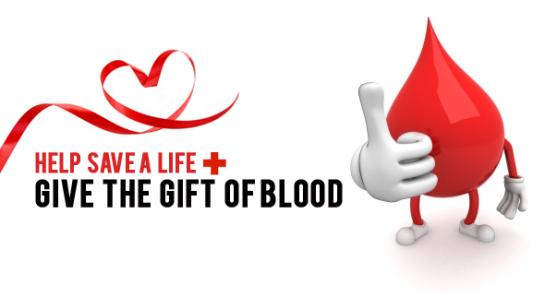KIDNEY CANCER TREATMENT IN INDIA AT BEST HOSPITALS IN DELHI MUMBAI BANGALORE

Overview
Surgery
Targeted Therapy-
Immunotherapy
Radiation Therapy
Chemotherapy
Palliative Care
Treatment overview
In cancer care, different types of doctors often work together to create a patient’s overall treatment plan that combines different types of treatments. This is called a multidisciplinary team.
Treatment options and recommendations depend on several factors, including the type and stage of cancer, possible side effects, and the patient’s preferences and overall health.
Kidney cancer is most often treated with surgery, targeted therapy, and/or immunotherapy. Radiation therapy and chemotherapy are occasionally used. Patients with kidney cancer that has spread (advanced cancer, see below) often receive multiple lines of therapy (treatments given one after another). Descriptions of these treatment options are listed below.
Active surveillance
In some cases, especially when the amount of cancer is small and slow-growing, the doctor may recommend that the patient is monitored closely and wait to start active treatment until there is evidence that the disease is worsening. This approach is called active surveillance, watchful waiting, or watch-and-wait.
Surgery
Surgery is the removal of the tumor and surrounding tissue during an operation. If the cancer has not spread beyond the kidneys, surgery to remove the tumor, part or all of the kidney, and possibly nearby tissue and lymph nodes, may be the only treatment necessary. A urologist or urologic oncologist is a doctor who specializes in treating kidney cancer using surgery. The types of surgery used for kidney cancer include the following procedures:
Radical nephrectomy. Surgery to remove the tumor, the entire kidney, and surrounding tissue is called a radical nephrectomy. If nearby tissue and surrounding lymph nodes are also affected by the disease, a radical nephrectomy and lymph node dissection (removal of the lymph nodes affected by the cancer) is performed. If the cancer has spread to the adrenal gland or nearby blood vessels, the surgeon may remove the adrenal gland (a procedure called an adrenalectomy) and parts of the blood vessels.
Partial nephrectomy. A partial nephrectomy is the surgical removal of a tumor while preserving kidney function and lowering the risk of kidney disease after surgery, called hyperfiltration injury. It is used most often for a small tumor, even when the other kidney functions normally.
Laparoscopic surgery. In laparoscopic surgery, the surgeon makes several small incisions, instead of one larger incision in the abdomen used in traditional surgery. The surgeon uses telescoping equipment to remove the kidney completely or perform a partial nephrectomy. This surgery may take longer, but it is less painful afterward and patients recover more quickly.
Radiofrequency ablation. Radiofrequency ablation (RFA) is the use of a needle inserted into the tumor to destroy the cancer with an electrical current. The procedure is performed by a radiologist or urologist. The patient is sedated and given local anesthesia to numb the area.
Cryoablation. Cryoablation (also called cryotherapy or cryosurgery) is the freezing of cancer cells with a metal probe inserted through a small incision. The metal probe is placed into the cancerous tissue using a CT scan and ultrasound as guidance. The procedure requires general anesthesia for several hours. The U.S. Food and Drug Administration (FDA) approved this treatment for kidney cancer, but more research studies are needed to determine how effective this treatment is in the long term.
Targeted therapy
Targeted therapy is a treatment that targets the cancer’s specific genes, proteins, or the tissue environment that contributes to cancer growth and survival. This type of treatment blocks the growth and spread of cancer cells while limiting damage to normal cells. These drugs are becoming more important in the treatment of kidney cancer.
Recent studies show that not all tumors have the same targets. To find the most effective treatment, your doctor may run tests to identify the genes, proteins, and other factors in your tumor. As a result, doctors can better match each patient with the most effective treatment whenever possible. In addition, many research studies are taking place now to find out more about specific molecular targets and new treatments directed at them.
Anti-angiogenesis therapy is a type of targeted therapy used in kidney cancer treatment. It is focused on stopping angiogenesis, which is the process of making new blood vessels. Because a tumor needs the nutrients delivered by blood vessels to grow and spread, the goal of anti-angiogenesis therapies is to “starve” the tumor.
For clear cell kidney cancer, sunitinib (Sutent), pazopanib (Votrient), and sorafenib (Nexavar), called tyrosine kinase inhibitors (TKIs), are two anti-angiogenic drugs that may be used during treatment. Clear cell kidney cancer has a mutation of the VHL gene that causes the cancer to make too much of a certain protein, known as vascular endothelial growth factor (VEGF). VEGF controls the formation of new blood vessels. Axitinib (Inlyta), also a TKI, has been approved to treat advanced renal cell carcinoma. Side effects of TKIs may include diarrhea, high blood pressure, and tenderness and sensitivity in the hands and feet.
Another anti-angiogenic drug, bevacizumab (Avastin), has been shown to slow tumor growth for people with metastatic renal carcinoma. Bevacizumab combined with interferon (see below) slows tumor growth and spreading.
Temsirolimus (Torisel) and everolimus (Afinitor) are drugs that attack a certain protein that helps kidney cancer cells grow, called mTOR. Studies show that these drugs slow kidney cancer growth.
Immunotherapy
Immunotherapy (also called biologic therapy) is designed to boost the body’s natural defenses to fight cancer. It uses materials made either by the body or in a laboratory to bolster, target, or restore immune system function. Kidney cancer may be one of the few cancers that the body’s immune system can fight, which often makes immunotherapy effective in treating kidney cancer. Immunotherapy may be beneficial in certain patients.
Interleukin-2 (IL-2) is a drug that has been used to treat advanced kidney cancer. It is a cellular hormone called a cytokine that is produced by white blood cells and is important in immune system function, including the destruction of tumor cells.
High-dose IL-2 can cause severe side effects, such as low blood pressure, excess fluid in the lungs, kidney damage, heart attack, bleeding, chills, and fever, so patients may need to stay in the hospital for up to 10 days during treatment. However, some symptoms may be reversible. Only centers with expertise in high-dose IL-2 for kidney cancer should recommend IL-2. Some centers use low-dose IL-2 because it has fewer side effects, although it is not as effective.
Alpha-interferon is another type of immunotherapy commonly used to treat kidney cancer that has spread. Interferon appears to change the proteins on the surface of cancer cells and slow their growth. Although it has not proven to be as beneficial as IL-2, it has been proven to increase survival when compared with an older treatment called megestrol acetate. Researchers have tested many combinations of IL-2 and alpha-interferon for patients with advanced kidney cancer, and these treatments have also been combined with chemotherapy. It has not been shown in research studies that these combinations are better than IL-2 or interferon alone.
Radiation therapy
Radiation therapy is the use of high-energy x-rays or other particles to kill cancer cells. A doctor who specializes in giving radiation therapy to treat cancer is called a radiation oncologist.
Radiation therapy is not considered effective as a primary treatment for kidney cancer. It is used alone only rarely to treat kidney cancer because of the high rate of damage that it causes to the normal kidney. It is used only if a patient cannot have surgery and, even then, usually only on areas where the cancer has spread and not the primary kidney tumor. Most often, radiation therapy is used after the cancer has spread to help ease symptoms, such as bone pain or swelling in the brain.
The most common type of radiation treatment is called external-beam radiation therapy, which is radiation given from a machine outside the body. When radiation treatment is given using implants, it is called internal radiation therapy or brachytherapy. For kidney cancer, internal radiation therapy is given using a hollow needle to insert radioactive seeds directly into a tumor. Another type of radiation therapy is stereotactic radiosurgery, which is designed to direct the radiation therapy to a specific area without damaging nearby tissue. A radiation therapy regimen (schedule) usually consists of a specific number of treatments given over a set period of time.
Side effects from radiation therapy may include fatigue, mild skin reactions, upset stomach, and loose bowel movements. Internal radiation therapy may cause some bleeding, infection, and risk of injury to nearby tissue. Most side effects go away soon after treatment is finished.
Chemotherapy
Chemotherapy is the use of drugs to kill cancer cells, usually by stopping the cancer cells’ ability to grow and divide. Systemic chemotherapy is delivered through the bloodstream to reach cancer cells throughout the body. Chemotherapy is given by a medical oncologist, a doctor who specializes in treating cancer with medication. A chemotherapy regimen (schedule) usually consists of a specific number of cycles given over a set period of time. A patient may receive one drug at a time or combinations of different drugs at the same time.
While useful to treat most types of cancer, kidney cancer is often resistant to chemotherapy. Researchers continue to study new drugs and new combinations of drugs. For some patients, the combination of gemcitabine (Gemzar) and fluorouracil (5-FU, Adrucil) or capecitabine (Xeloda) will temporarily shrink a tumor. Also, axitinib may be prescribed to treat advanced renal cell carcinoma. It is important to remember that urothelial carcinoma (also called transitional cell carcinoma) and Wilms tumor are much more likely to be successfully treated with chemotherapy.
The side effects of chemotherapy depend on the individual and the dose used, but can include fatigue, risk of infection, nausea and vomiting, loss of appetite, and diarrhea. These side effects usually go away once treatment is finished.
Palliative/supportive care
Cancer and its treatment often cause side effects. In addition to treatment to slow, stop, or eliminate the cancer, an important part of cancer care is relieving a person’s symptoms and side effects. This approach is called palliative or supportive care, and it includes supporting the patient with his or her physical, emotional, and social needs.
Palliative care can help a person at any stage of illness. People often receive treatment for the cancer and treatment to ease side effects at the same time. In fact, patients who receive both often have less severe symptoms, better quality of life, and report they are more satisfied with treatment.
Before treatment begins, talk with your health care team about the possible side effects of your specific treatment plan and supportive care options. And during and after treatment, be sure to tell your doctor or another health care team member if you are experiencing a problem, so it is addressed as quickly as possible.










